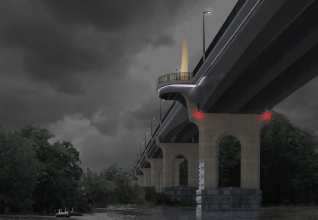Explore the Eisenhower Bridge of Valor
The new Eisenhower Bridge of Valor opened to traffic on November 21, 2019 after nearly three years of construction.
Explore the project by clicking on the icons and buttons on the map. Watch video clips featuring different voices from around the region on topics ranging from bridge design to art, history and tourism.
For best results, use Chrome, Firefox, or Edge browsers.
Let's Go!Video Library
Time Lapse Videos By Year
2017
2018
2019
2020
Bridge Stories
A Bridge that Spans Mark Anway's Memories
New Bridge; New Name
Carlos Figi's Daily Commute
Two States, Two DOT's, and a Whole lot of Engineers
Art of the Bridge
Regional Impact - the Business of a Bridge
Hike, Bike, or Jog - Get Moving Across the Bridge
Preserving Our Past
Protecting Sacred Sites
Local Philanthropy Beautifies the Bridge for All
Construction on the Wisconsin Side
New Techniques Needed for the New Bridge
Four-Year Front Row Seat to the Bridge Build
Protecting Historic Properties
Beyond Engineers: Who builds a bridge?
Red Wing Bridge History
Every day an average of 13,300 vehicles use the Eisenhower Bridge of Valor (also known as the Red Wing Bridge) to cross the Mississippi River. This bridge provides the only regional river crossing for approximately 30 miles upstream and downstream for communities on either side of the river. The new $63.4 million Eisenhower Bridge of Valor replaced the Eisenhower Memorial Bridge.
DID YOU
KNOW?
Red Wing's Bridges
Whether it’s to obtain goods, services, or experiences, people have crossed the Mississippi River for centuries. Read how the Red Wing area river crossing has changed through the years.
Click on the image to enlarge.
Bridge Components
The new Eisenhower Bridge of Valor has two travel lanes, one in each direction, with wider shoulders and a 12-foot wide shared-use path for pedestrians and bicyclists on the upstream side of the bridge. Standing more than 70 feet above the Mississippi River, the new bridge features ornamental railings, decorative spires and other carefully selected design elements that were chosen through a vigorous community engagement process.
DID YOU
KNOW?
Bridge Components
A spire is a tall decorative structure that tapers toward the top. The Red Wing Bridge has four spires with the state names: two for Minnesota and two for Wisconsin.

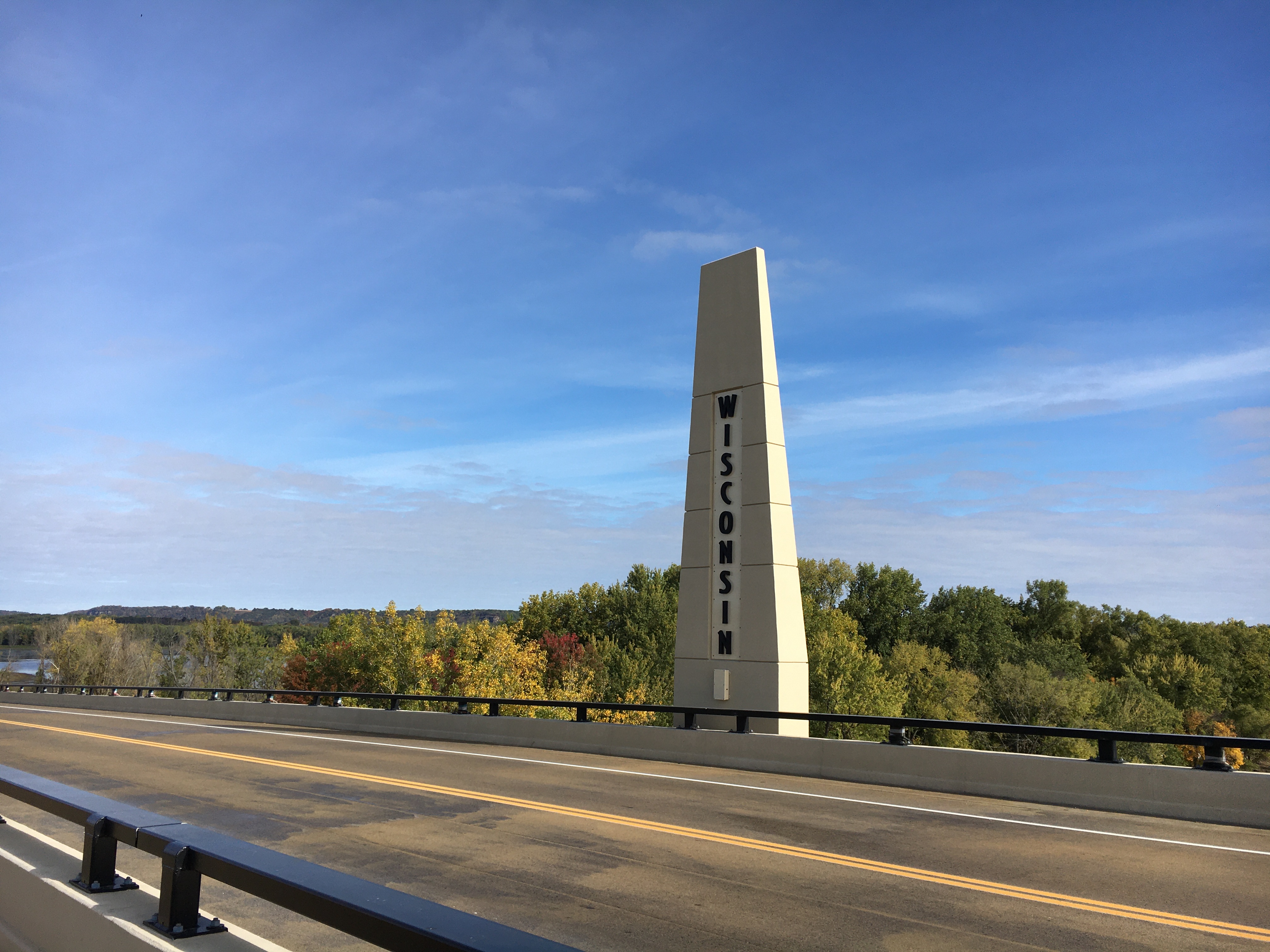
The bridge deck supports the driving surface and shared-use path on the upstream side of the bridge.
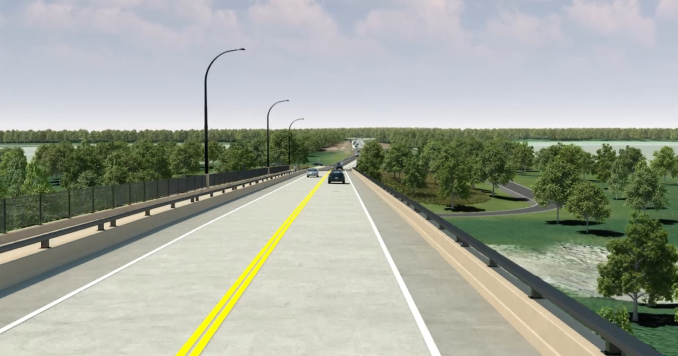
A tub girder is a large, steel, hollow beam that supports the bridge deck (driving surface) and resembles the shape of a bath tub. Four tub girders make up a set. Three side-by-side sets support the bridge deck.
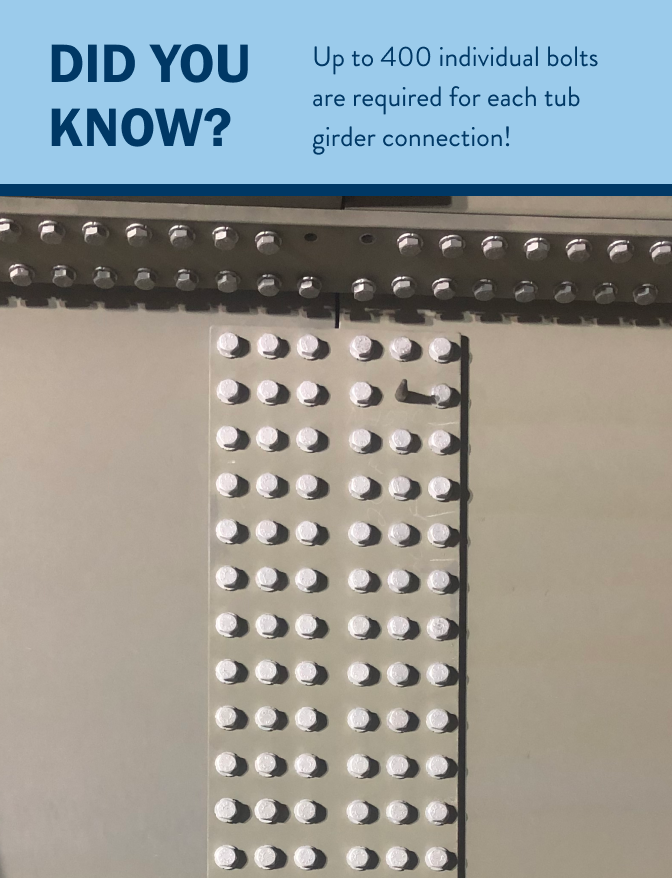
The pounds-per-square-inch (psi) of the pier column concrete - the amount of force needed to break a material - is 4,000 psi. That’s nearly 100x stronger than the water pressure you have at home!

The pier footing, or foundation, sits underground or underwater and supports the weight of the bridge structure, vehicles and people overhead. During construction, crews use a temporary enclosure called a cofferdam to create a dry work area. Did you know: The steel rebar in the underwater portion of one of the piers weighs 408,305 pounds. In comparison, the Statue of Liberty weighs 450,000 pounds!
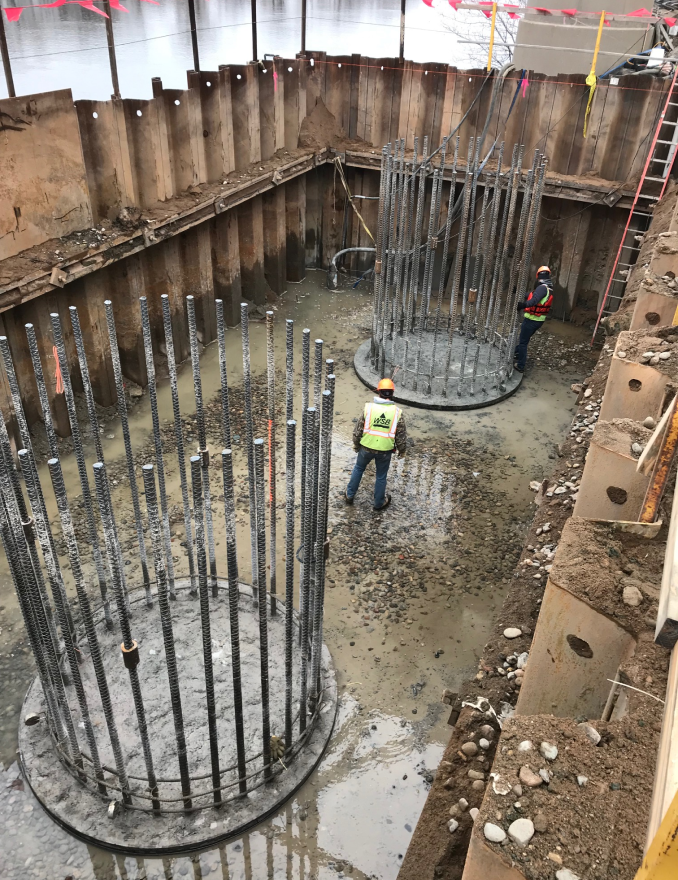
The pier in the Mississippi River has four, 9-foot diameter shafts in its foundation. Each shaft is filled with rebar and concrete. The shafts go down through the river bottom and anchor into the bedrock.
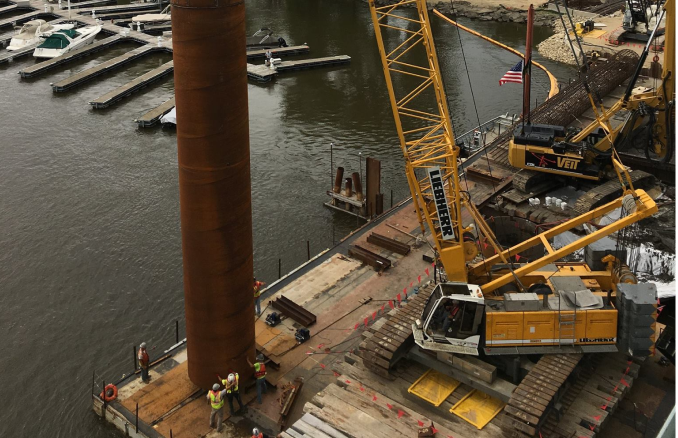
Construction and Demolition
The Eisenhower Memorial Bridge was “fracture critical,” meaning that if one fracture critical bridge section were to fail, the entire bridge could collapse. Following the I-35W Bridge collapse, the Minnesota Legislature established funding for rehabilitation or replacement of certain types of bridges around the state, including the Eisenhower Memorial Bridge.
More than just a new bridge...
The new Eisenhower Bridge of Valor maintains the important connection between Minnesota and Wisconsin. In addition to replacing the bridge, we made adjustments to the supporting infrastructure, including:
- Reconstructing Highway 63 on both sides of the Mississippi River.
- Improving connections to Highway 61 and Highway 58 in Red Wing.
- Creating better access to and from downtown Red Wing.
- Upgrading bicycle and pedestrian crossings.
The new Eisenhower Bridge of Valor was built next to the existing bridge to keep the river crossing open during construction.
Construction Timeline
Construction began in May 2017 and was completed in November 2020.
Construction Photos
Use the arrows to left and right of the photos to see different views and close-ups of the construction.








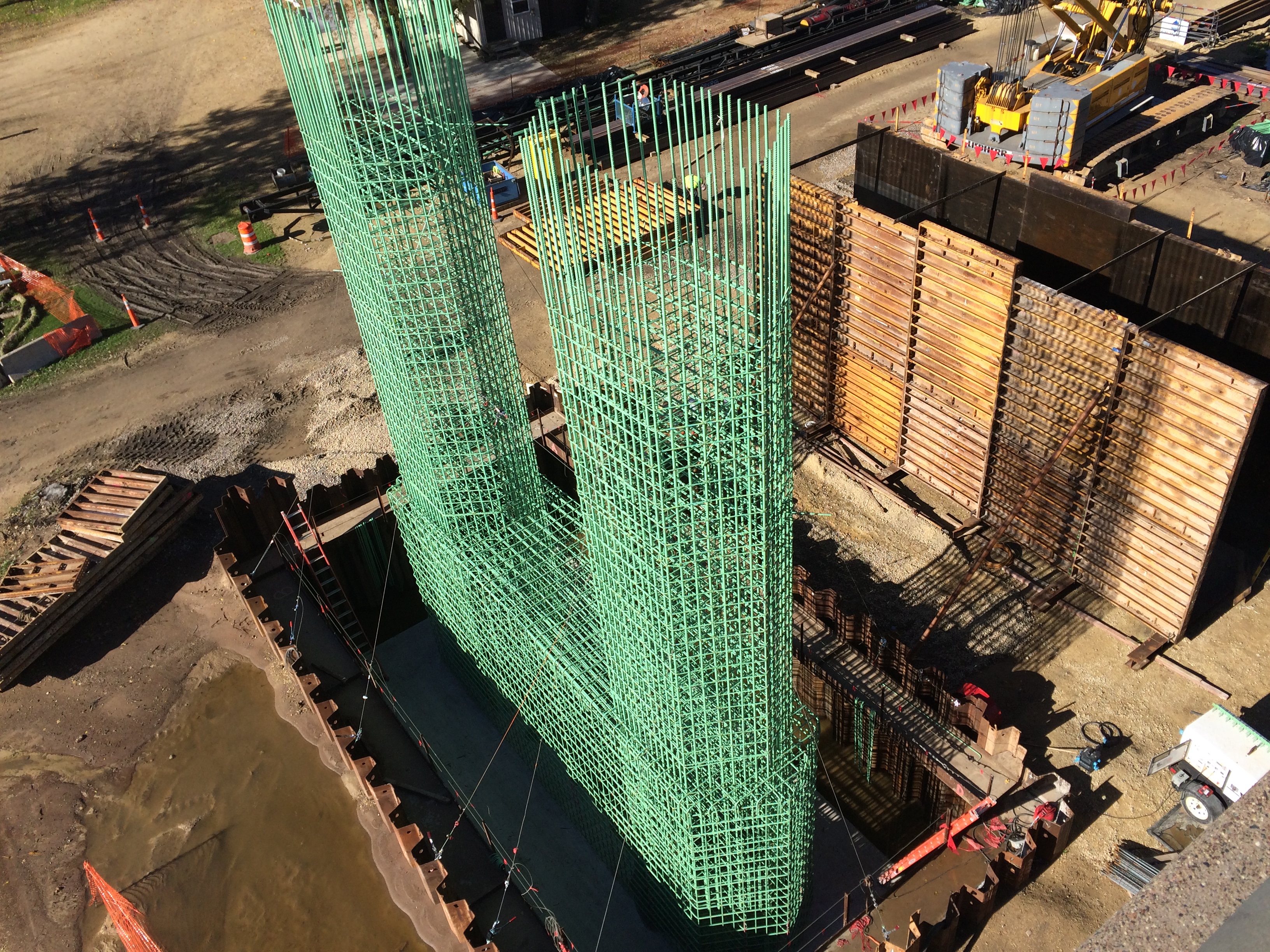

Demolition
Demolition of the former Eisenhower Memorial Bridge began shortly after the new bridge opened to traffic in November 2019. Piece by piece, the old bridge was dismantled.

Construction crews cut the old bridge into pieces and removed it from the project site. Some of the old concrete was crushed up and reused.

The steel truss over the river was disassembled and each piece lowered by crane onto a barge.

On June 30, 2020, crews used explosive charges to remove Pier 2 to approximately 2 feet below the mud line in the river. Blasting mats were placed on the surface of the water to prevent any debris from flying up during this process. All debris was removed from the area before allowing nearby traffic on the water and on land to resume.
A 29-Year Commute
Wisconsin resident, Carlos Figi, has commuted to Red Wing for 29 years. Hear how the new Eisenhower Bridge of Valor has changed his daily grind.
Art on the Bridge
While the Eisenhower Bridge of Valor is a work of art in the architectural and engineering sense, it's also going to be the home of 32 distinct pieces of art. Emily Guida Foos of Red Wing Arts explains where the art will go and the legacy it will leave for those who walk the bridge.
Red Wing Area Chamber of Commerce
Approximately 13,000 vehicles cross the new Eisenhower Bridge of Valor every day; some for work, some for shopping and some for play. Learn about the economic impact of a bridge.
Goodhue County Historical Society
DID YOU
KNOW?
We've come a long way since a ferry was used to cross the Mississippi River at Red Wing, but steps have been taken along the way to preserve our unique history. Hear from the Goodhue County Historical Society on what's been preserved as we made way for the new Eisenhower Bridge of Valor.
Hike, Bike or Jog - Get Moving Across the Bridge
Whether you hike, bike or jog, the new shared-use path across the Eisenhower Bridge of Valor will get you there safely while enjoying some of the best panoramic views of the Mississippi River and iconic bluffs. Pick up the trail on Potter Street on the Minnesota side or on 825th Street on the Wisconsin side. The shared-use path will open to the public in spring 2021. A small amount of work remains so the path will be closed over the winter.
City of Red Wing
Building a bridge this big is a massive endeavor involving partners across two states and multiple agencies. City Engineer Jay Owens describes his part in the four-year process and what the finished product brings to our region.
Project Team Construction Office
Designing a bridge is difficult by any measure, but building one with tight approaches, active river and railroad tracks, and sinking roads is entirely another. MnDOT Project Design Manager Chad Hanson explains some of the unique techniques used to build the Eisenhower Bridge of Valor.
Our Commitment to the Environment
Throughout construction, the Red Wing Bridge project team worked closely with local public and agency partners to monitor activities and protect the area's wildlife. From land to water to what’s flying overhead, there are an abundance of species that required our careful attention.
- During nesting season, we continuously monitored the bald eagles that call this area home, and their eaglets, to protect them from disruption.
- We limited tree trimming and removal to certain times of the year to protect the threatened northern long-eared bat.
- All live mussels are protected in Minnesota and Wisconsin. Our efforts to minimize impacts included a mussel survey of the river bottom.
Other best practices on this project included:
- Installing a variety of filter barriers to keep sediment such as sand, rock and scum from leaving the construction site and entering the river.
- Using a hydromulch mixture and straw mulch to cover disturbed soils and prevent erosion.
- Washing the rock that was used to construct the causeway to remove any sediment before placing it into the river.
- Containing any chemicals on barges in the river.
- Sealing the Eisenhower Memorial Bridge drains to prevent water and liquids from the construction site from entering the river during the demolition process.
- Using a custom-made box hung over the edge of the bridge to catch concrete pieces when removing the deck of the Eisenhower Memorial Bridge.
Bridge Lighting
DID YOU
KNOW?
The aesthetic lighting balances the needs of the river valley with those of the community and modern design. Light pollution is intentionally reduced to be minimally disruptive to the environment. The lighting ties into the ornamental railings. Lights on the pillars and “wash lighting” outlines the bridge shape on the upstream side and is visible from Levee Park, the river, and the Wisconsin shoreline.
What’s Left of the Old Bridge?
On June 30, 2020, crews used explosive charges to remove Pier 2 to approximately 2 feet below the mud line in the river. Blasting mats were placed on the surface of the water to prevent any debris from flying up during this process. All debris was removed from the area before allowing nearby traffic on the water and on land to resume. To protect the fish in the river, the project team used bubble wands to temporarily scare them away from the area.
He Mni Can - Barn Bluff
The Eisenhower Bridge of Valor is built directly next to He Mni Can - Barn Bluff in Red Wing; a site of tremendous cultural significance and history to the Dakota People. Nicky Buck and Noah White speak about the collaboration with the Prairie Island Indian Community to protect this resource during construction and into the future.
Past and Present
Mark Anway distinctly remembers sitting on his grandfather's shoulders and cheering for President Eisenhower as he dedicated the Eisenhower Memorial Bridge at Red Wing, MN, in 1960. Mark was also at the groundbreaking for the new Eisenhower Bridge of Valor and has watched every stage of construction progress for four years. As we learn from Mark, a bridge can span far more than just distance.
New Bridge; New Name
Listen to the story of how the new bridge connecting Minnesota and Wisconsin at Red Wing got its new name from the person who led the movement, Jane Drazkowski.
Local Philanthropy Beautifies the Bridge for All
The Jones Family Foundation and the Red Wing Area Fund are two local philanthropic agencies that are the pillars of community charity here in Red Wing. When they saw the plans for the new Eisenhower Bridge of Valor they decided to contribute in a major way to make it even better, adding $365,000 of aesthetic improvements from lighting to landscaping. Hear what inspired them to donate and why.
Construction on the Wisconsin Side
When a bridge spans state lines, multiple Departments of Transportation and countless other players get involved. Learn of the challenges and triumphs of the Eisenhower Bridge of Valor construction project from WisDOT Project Manager Dave Koepp.
Four-Year Front Row Seat to the Bridge Build
Local businesses near the new Eisenhower Bridge of Valor had front-row seats during the four-year construction process. The end product was worth the wait for local business owners, including Brad Smith, who couldn't be happier with the safer entrance to his Wisconsin business.
Protecting Historic Properties
The new Eisenhower Bridge of Valor enters Red Wing, MN, right in the heart of the downtown historic district. Bridge construction impacted buildings well over one hundred years old. Their charm is intrinsic to the identity of this quaint river town and protecting them was extremely important to MnDOT's Cultural Resources team. Learn what steps they took to identify the historic and cultural resources in the area, and to protect and preserve them during construction.
Beyond Engineers: Who builds a bridge?
Who does it take to build a bridge? Engineers, construction workers, and tradespeople of all kinds probably immediately come to your mind, but did you think of historians? Yes, historians! As part of the Red Wing Bridge Project, MnDOT worked with historians to conduct archeological surveys and excavations, and to protect local buildings dating back to 1875. Learn more about the unique and important contributions they made to this project.
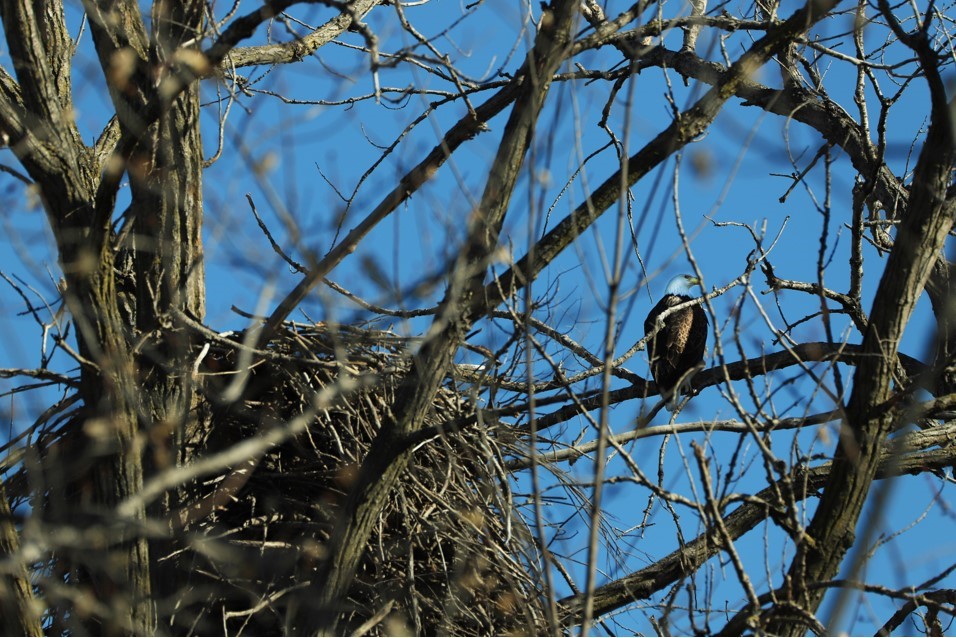 Tom Hughes Photography
Tom Hughes Photography

